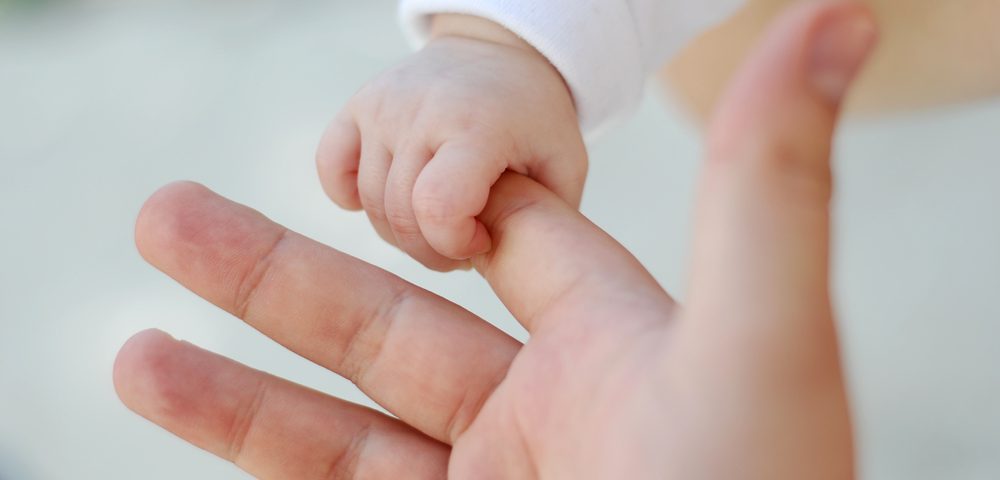Evrysdi Seen to Improve Survival, Motor Development of Infants with SMA Type 1

Genentech’s Evrysdi (risdiplam) improved survival in infants with spinal muscular atrophy (SMA) type 1, and allowed them to achieve developmental milestones not usually seen in the natural course of the disease, according to one-year data from the dose-finding part of the FIREFISH trial.
While the trial is still ongoing and has moved to its confirmatory second part, these early findings were described in a study, titled “Risdiplam in Type 1 Spinal Muscular Atrophy,” published in The New England Journal of Medicine.
The U.S. Food and Drug Administration (FDA) approved Evrysdi in August as the first oral and at-home treatment for patients, 2 months and older, with any SMA type, followed shortly by an identical decision in Brazil.
Similar approval requests are currently being reviewed by health authorities in Canada, China, Switzerland, and the European Union, where the application is under accelerated assessment.
“Since Evrysdi was FDA approved in August, we have been inspired by the stories and sense of hope that we have heard from people living with SMA and their families about the impact Evrysdi has had in their lives,” Levi Garraway, MD, PhD, Genentech’s chief medical officer and head of global product development, said in a press release.
The first publication of FIREFISH results “reinforces the value of Evrysdi as an important treatment option for SMA,” Garraway added.
A small molecule, Evrysdi works by increasing the levels of SMN, a protein essential for motor neuron and muscle health and whose production is impaired in SMA patients. A flavored liquid, it can be administered orally or given through a feeding tube, once daily, to SMA patients in a broad range of ages and disease severity.
The global, two-part, Phase 2/3 FIREFISH study (NCT02913482) was designed to test Evrysdi in infants, 1 to 7 months, with type 1 SMA, a severe form “characterized by the inability to sit without support and by reduced life expectancy,” the researchers wrote.
Part 1’s main goals were to assess Evrysdi’s safety, pharmacokinetics (movement into, through, and out of the body) and pharmacodynamics (effects on the body) in 21 babies and to determine the optimal dose for the trial’s second part.
Exploratory analyses included the proportion of patients not on permanent ventilation and those sitting without support for at least five seconds, as well as changes in motor function and milestones — all assessed with validated measures.
Infants’ median age was 6.7 months (range from 3.3 to 6.9 months) and they developed the first symptoms at a median of 2 months. None were able to sit without support, and five (24%) of them were receiving respiratory support.
Four girls received the low dose (final dose of 0.08 mg/kg), and 11 girls and six boys were given the high-dose — final dose of 0.2 mg/kg, later selected for Part 2 and approved for use.
At the time of the one-year analysis, participants’ mean average age was 17.7 months, and they had been treated for a median of 14.8 months.
Results showed that Evrysdi treatment increased patients’ SMN levels by a median of threefold in the low-dose group and 1.9 times in the high-dose group, confirming its mechanism of action.
Notably, 90% of the now-toddlers (three in the low-dose group and 16 in the high-dose group) were living without permanent ventilation. Four infants died of respiratory complications, three up until the one-year analysis and one thereafter. No deaths were deemed related to Evrysdi.
In the high-dose group, seven (41%) toddlers were able to sit without support, nine (53%) maintained upright head control at all times, and one (6%) was able to stand (bearing weight). No infants in the low-dose group were able to attain such milestones.
In addition, 11 (52%) of the participants had a score of 40 or higher on the Children’s Hospital of Philadelphia Infant Test of Neuromuscular Disorders. This result is “rarely observed in patients with type 1 spinal muscular atrophy,” the researchers wrote. The test assesses motor skills in infants using a scale of 0 to 64 points, with higher scores indicating better motor function.
At one year, no infant had lost the ability to swallow, and 86% (three on the low dose and 15 on the high dose) were able to feed orally, either exclusively or in combination with a feeding tube.
These benefits were observed despite the fact that FIRFISH participants “were older and had a longer duration of disease at [study start] than patients in other clinical trials in type 1 spinal muscular atrophy,” the researchers wrote.
The most frequently reported adverse events were fever (52%), upper respiratory tract infections (43%), diarrhea (29%), cough (24%), vomiting (24%), constipation (19%), and pneumonia (19%). A total of 24 serious adverse events were reported, with the most common being respiratory tract infections.
Overall, these findings supported the evaluation of the high dose in the second, confirmatory part of FIREFISH, which is evaluating the safety and effectiveness of the selected, now-approved Evrysdi dose in another 41 type 1 infants (median age of 5.3 months) for two years.
Previously reported two-year results from FIREFISH’s Part 1 showed that the toddlers, now all receiving the high dose, continued to improve and achieve motor milestones.
In addition to FIREFISH, three other clinical trials — SUNFISH (NCT02908685), JEWELFISH (NCT03032172), and RAINBOWFISH (NCT03779334) — are testing Evrysdi in SMA patients. In total, more than 450 SMA patients, with ages ranging from a few months to 60 years, are currently receiving the medication in one of these studies.
The international RAINBOWFISH trial is still recruiting newborns up to 6 weeks old with a genetic diagnosis of SMA but no evidence of symptoms.







